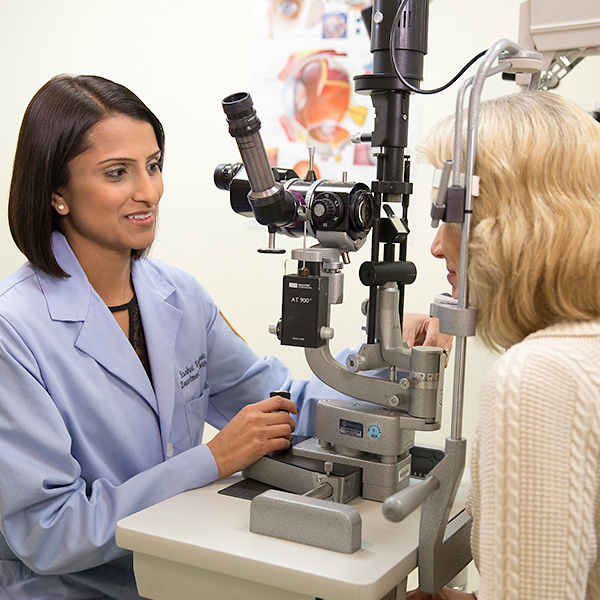Nearsightedness
Overview and Facts about Nearsightedness
Nearsightedness, also known as myopia, is one of the most common ocular conditions. It occurs when your eye is too long, causing light rays to focus in front of the retina rather than directly on the retina.
If you have nearsightedness, you have problems seeing things far away but can see normally up close.
Overall, statistics show that 41.6% of people ages 12 to 54 had nearsightedness between 1999 and 2004. In 1971 and 1972, just 25% of people had nearsightedness.
Signs and Symptoms of Nearsightedness
The most obvious sign of myopia is not being able to see at a distance. For example, you might have trouble reading road signs. Nearsightedness can have different levels of severity, meaning that vision problems may be worse in some people.
Other signs of nearsightedness include:
- Headaches
- Squinting to try to see better
- Eye strain
- Feeling tired after driving or playing sports
Causes and Risk Factors of Nearsightedness
Nearsightedness typically begins in childhood and can worsen throughout the teenage years. It often first appears in children between the ages of 8 and 12.
Typically, nearsightedness occurs when the eye is too long, preventing light from focusing directly on the retina. It can also be caused by the cornea or lens having too much of a curve.
Many people inherit nearsightedness from their parents. It can also occur later in life as a side effect of diabetes or from visual stress.
Tests and Diagnosis of Nearsightedness
Your doctor can diagnose myopia during a comprehensive eye examination. During the exam, they dilate your eyes and use a phoropter and a retinoscope to see how your eyes focus light.
Your doctor will also ask you to identify letters on a distance chart. Normal visual acuity is 20/20, which means you can read letters from 20 feet away. If you have myopia, you are unable to read letters from a distance of 20 feet that people with normal vision can see.
Treatment and Care for Nearsightedness
Luckily, nearsightedness is easy to treat with corrective lenses. Your optometrist can prescribe either glasses or contact lenses to correct your vision problems and help you see.
If you’d like a permanent cure for nearsightedness, your optometrist might recommend refractive surgery. Lasik is the most common form of refractive surgery. These surgeries change the shape of your cornea so that light reflects in the correct position.
When performed successfully, refractive surgery eliminates or greatly reduces the need for glasses or contact lenses.

Request an Appointment
Whether you are seeking routine eye care or have a specific vision issue, our team treats a wide range of eye diseases and conditions, including cataracts, glaucoma, macular degeneration and strabismus. Schedule an appointment today.
Schedule a Telehealth Appointment
